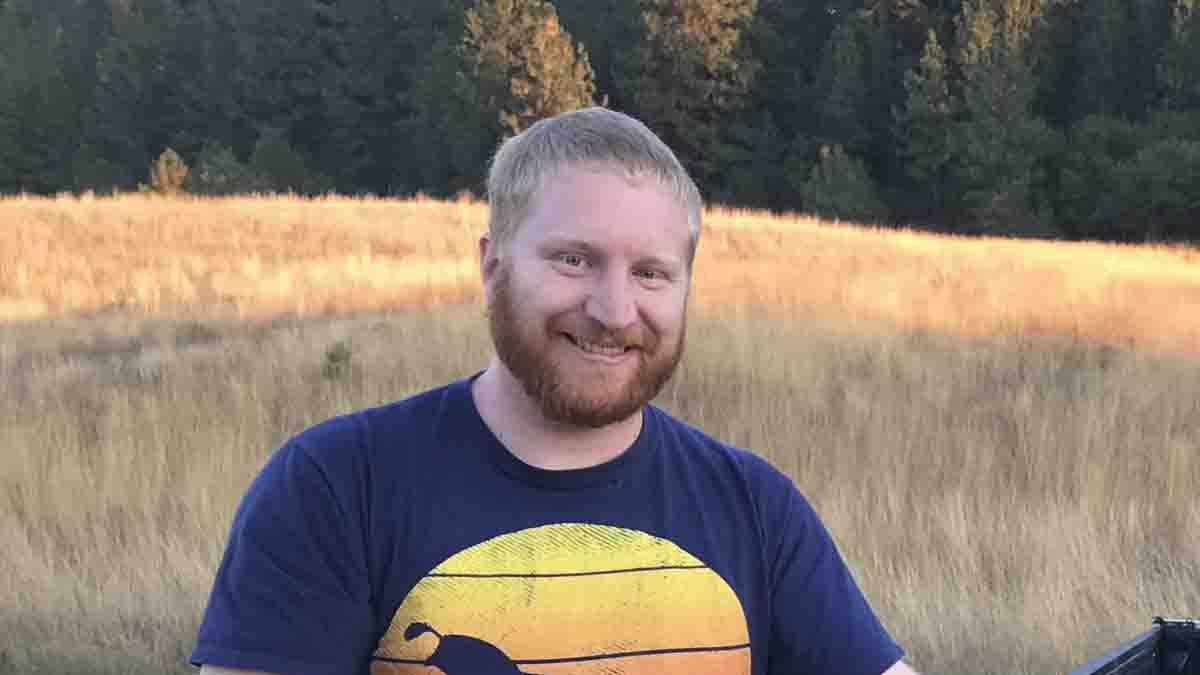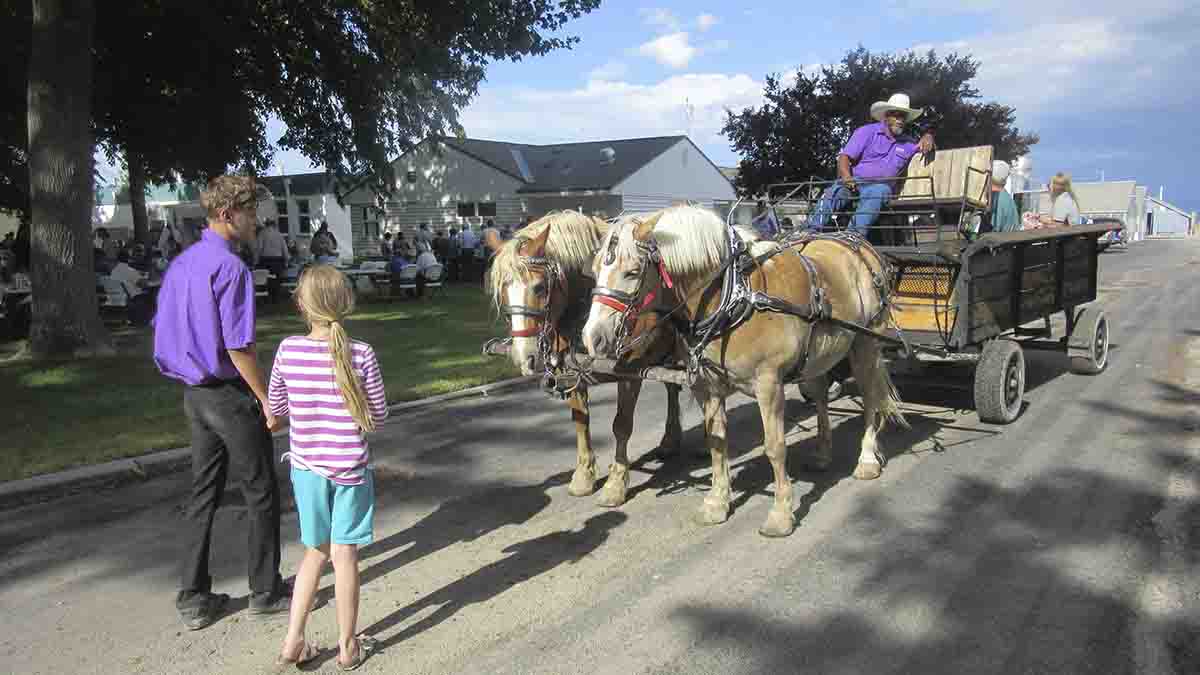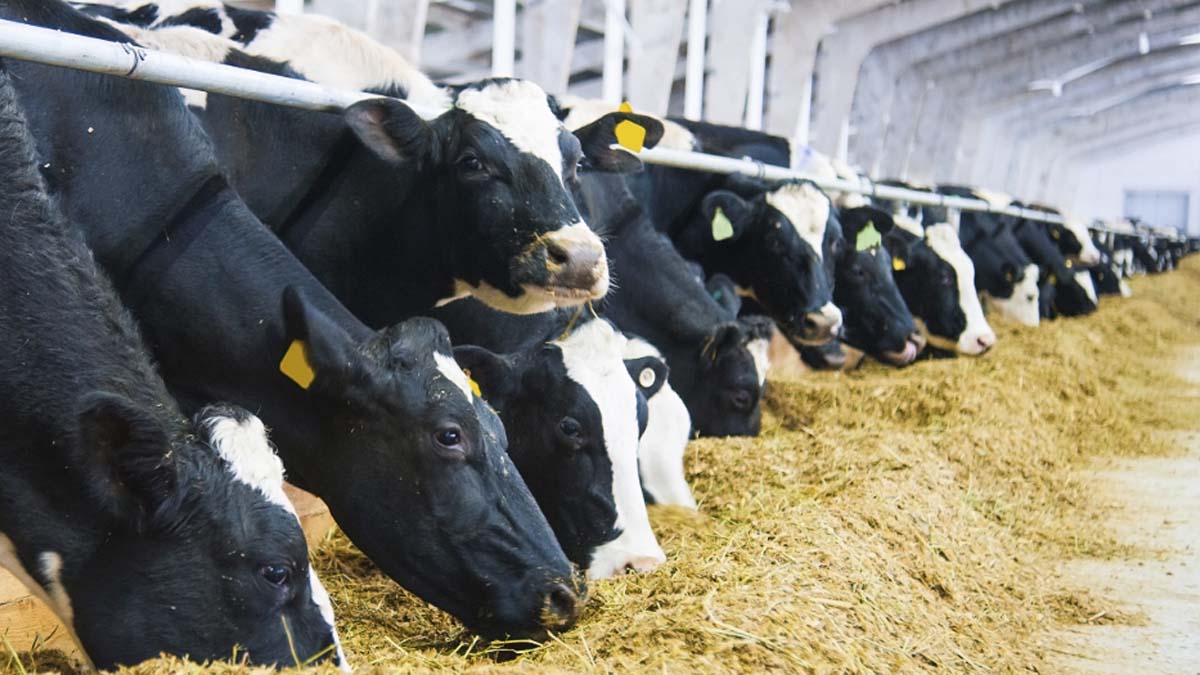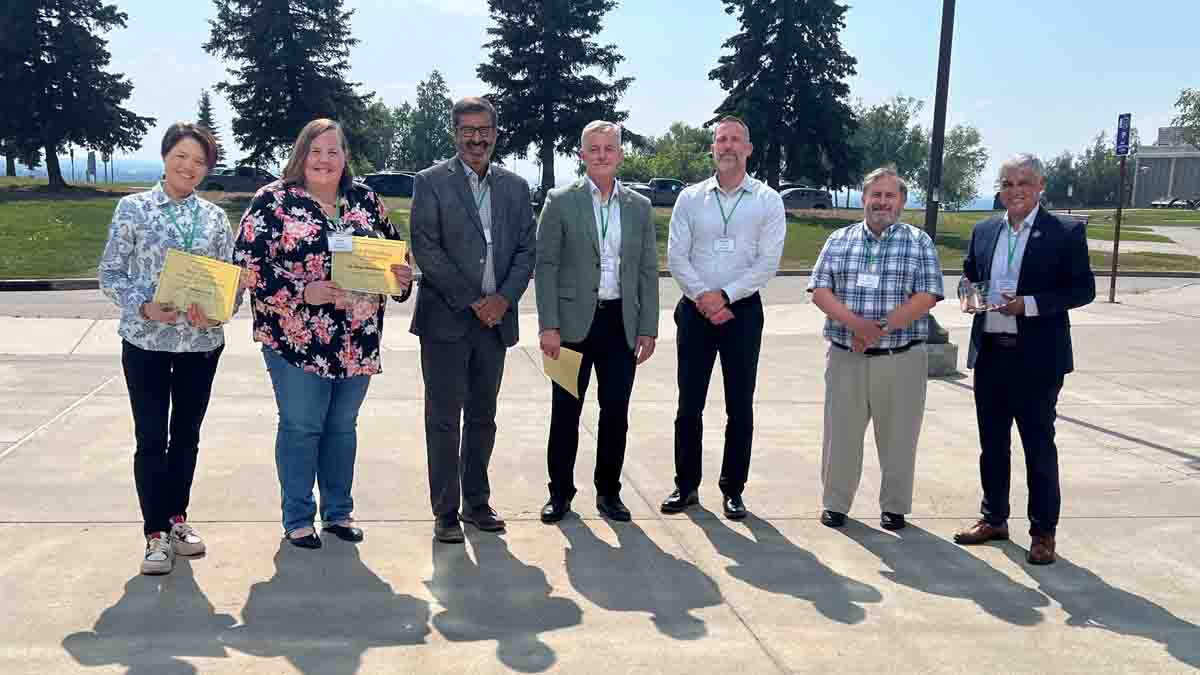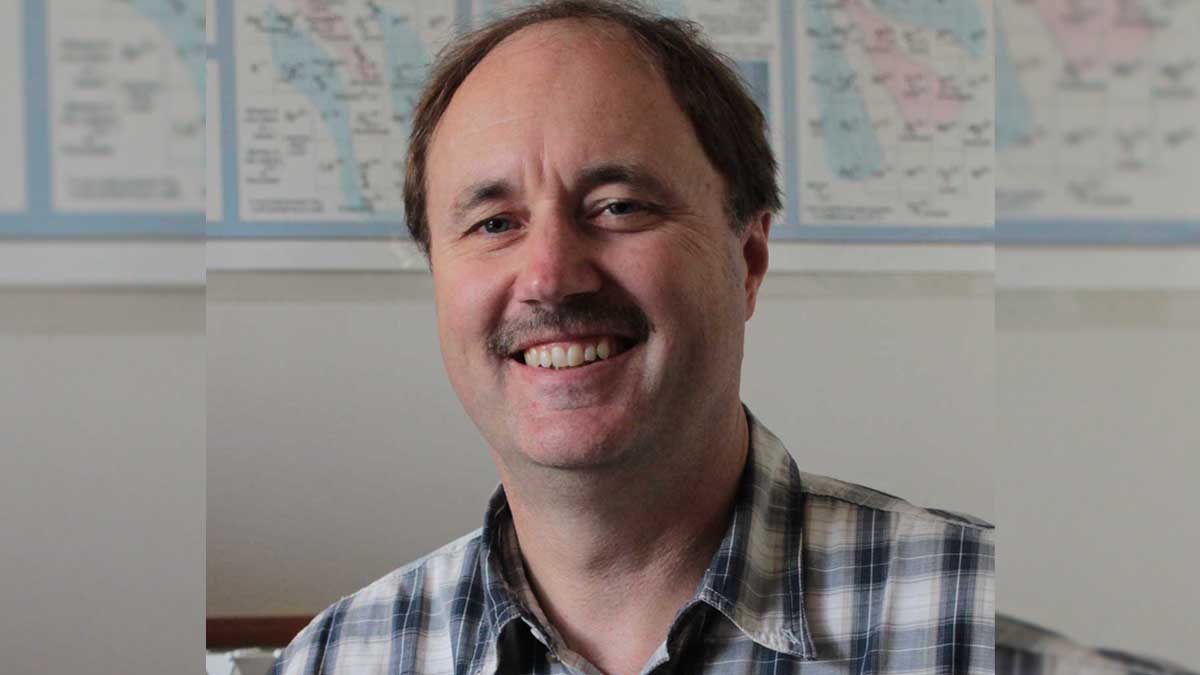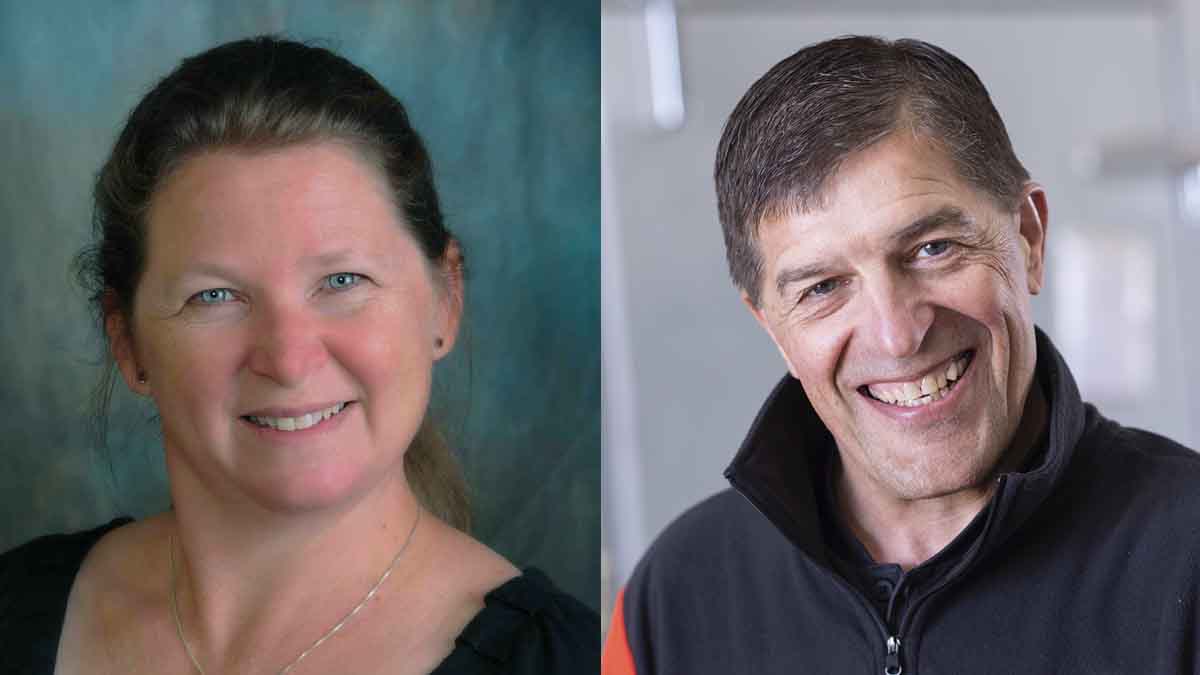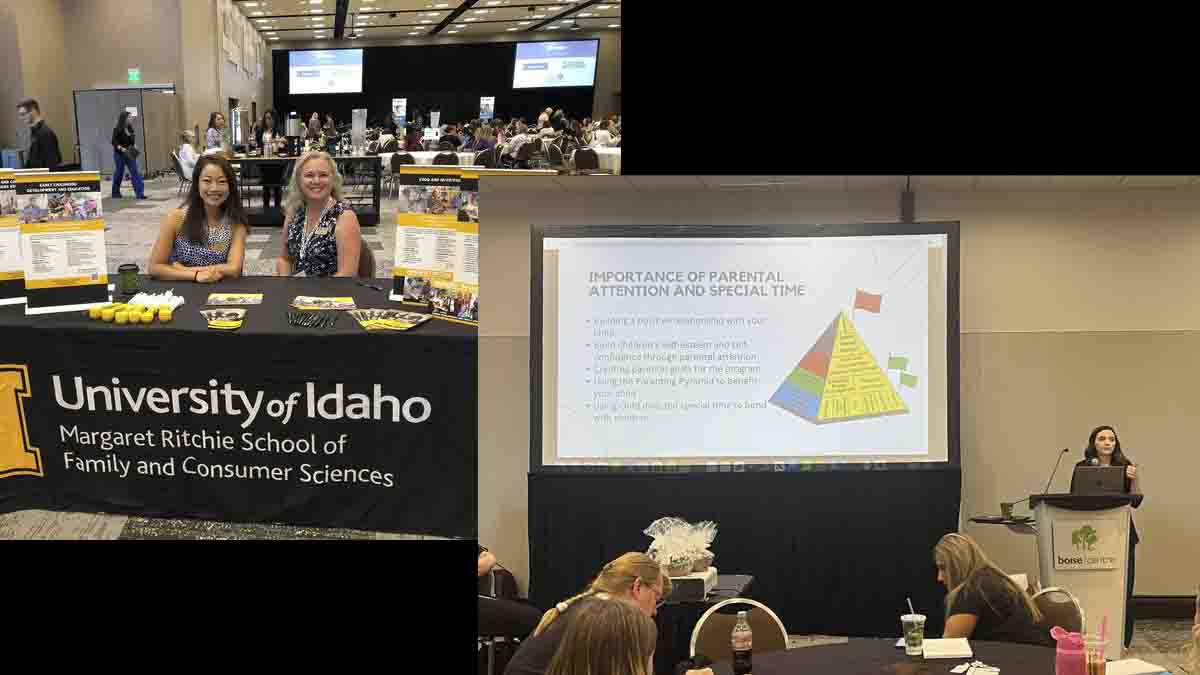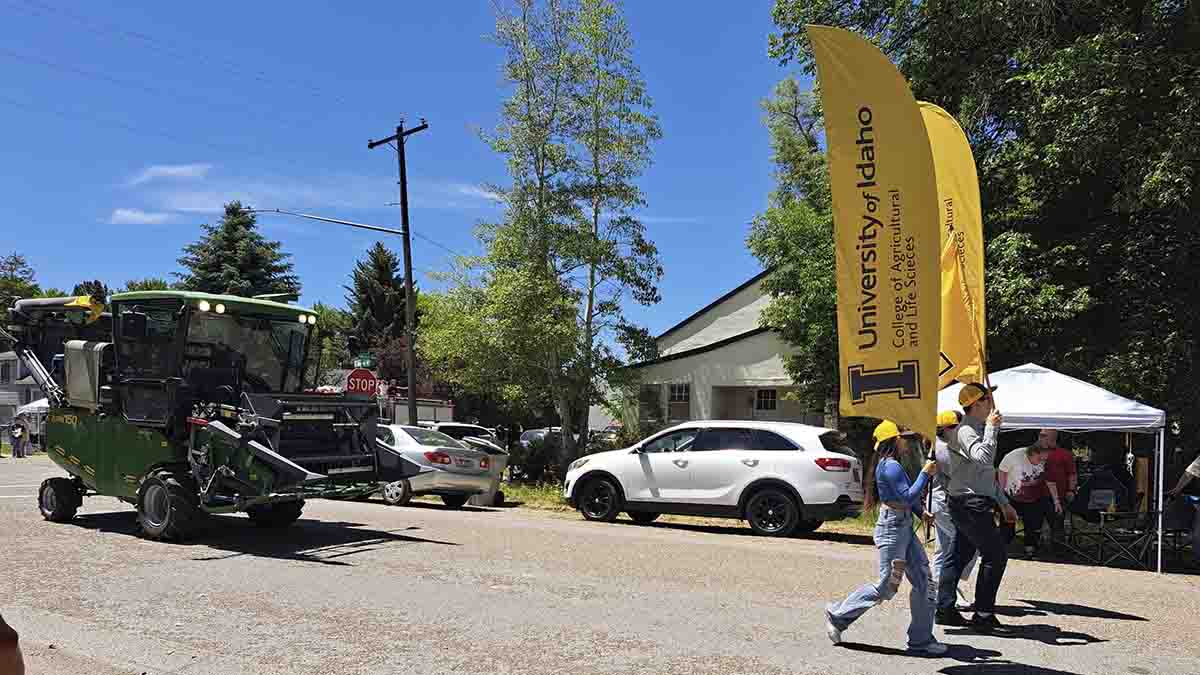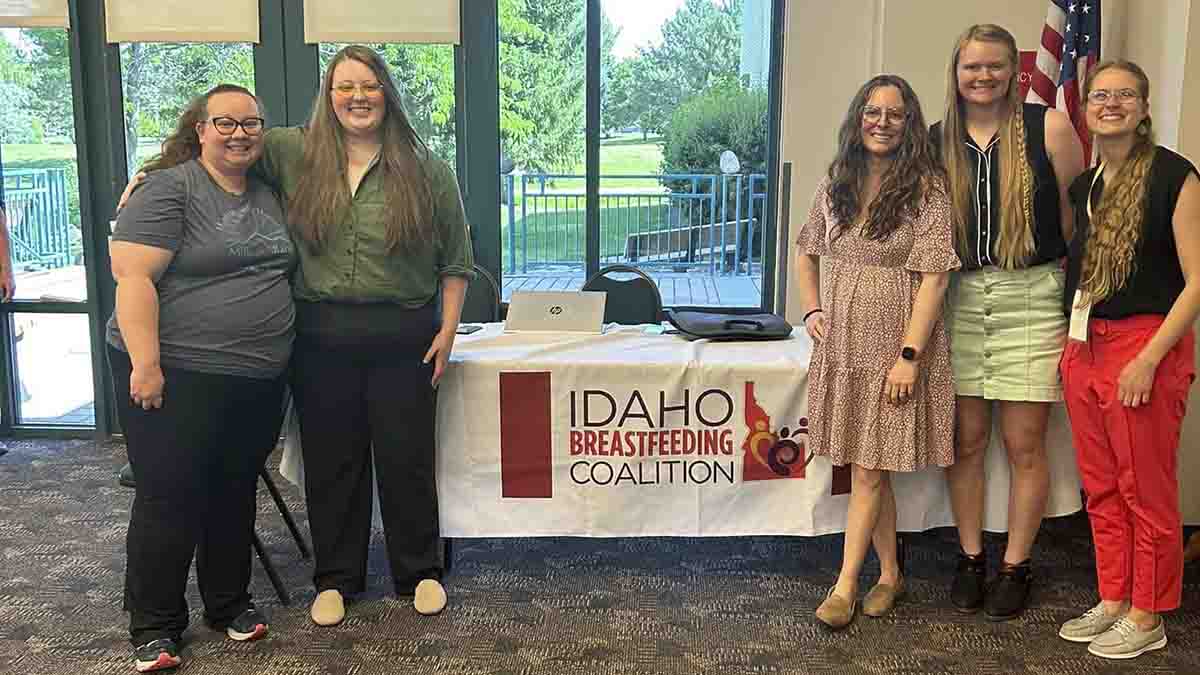Catching Up with CALS — July 10, 2024
Dean's Message — A Broad Mission
I recently had the privilege of addressing a full crowd gathered at the Pitman Center for the 2024 Idaho Democratic Convention. Tasked with highlighting the history and mission of the land-grant university system, I briefly covered how the Morrill Act of 1862 provided federal land to states to establish colleges, with a focus on agricultural science, military science and engineering. The land-grant system was further enhanced by the expanded Morrill Act of 1890 and 1994. The Hatch Act of 1887 established a network of agricultural experiment stations under each state’s land-grant college, and the Smith-Lever Act of 1914 ushered in the era of Cooperative Extension. I also touched upon some comprehensive, multimillion-dollar science projects our college is now undertaking in fulfillment of its land grant responsibilities — such as the Deep Soil Ecotron to facilitate studying soils at greater depths than ever before, the Innovative Agriculture and Marketing Partnership for Idaho (IAMP), which received the largest grant in the university’s history from USDA to incentivize climate-smart production practices on Idaho farms and creation of the NIH Center of Biomedical Research Excellence (COBRE) in Nutrition and Women's Health. In response to learning about these big, game-changing projects, some attendees expressed concerns that CALS research has become increasingly beholden to agribusiness and big agriculture. “What about the small farmer?” some asked. I’d like to set the record straight: CALS represents an enormous umbrella, and there’s a place for everyone to benefit from our research and programs — small farms included.
Though agribusiness has become a contentious word to many, associated with faceless corporations, 96% of Idaho farms are family owned, according to USDA. Furthermore, agricultural economists within our college estimated Idaho’s agricultural cash receipts (pdf) at $11.2 billion in 2023, responsible for one in eight jobs in the state and 12.5% of Idaho’s gross domestic product. The small farmer is extremely important in Idaho, where 48% of Idaho's farms and ranches are smaller than 50 acres. Another 20% are between 50 and 179 acres. Furthermore, 66% of Idaho farmers have annual gross farm sales less than $25,000. Almost 2,500 farms in Idaho report selling their products directly to consumers. While small farms provide options for consumers and are fertile ground for testing novel production approaches, we must balance many needs as Idaho’s land-grant college. Big agriculture carries most of the weight in terms of fueling the economy and feeding the world’s growing population. CALS also stands to effect the greatest change through our research efforts when we apply our findings across vast acreages.
Should we avoid doing the research requested by our stakeholders to exert our independence? State and federal support for our Extension network and experiment stations has remained flat, yet we’re asked to study more than 180 crops now raised in Idaho. By necessity, we pursue stakeholder support and large grants to fund our projects. CALS shares many goals with stakeholders, and it’s vital that our research is applicable in a real-world setting — otherwise it’s useless.
We’re catering to home gardeners and small farmers as never before. Our Caldwell-based Food Technology Center is a business incubator helping aspiring entrepreneurs roll out their own food product brands. Zacca Hummus, for example, launched from the center and uses garbanzo beans raised on the Palouse. Home gardeners throughout the state are boosting their food production through our Idaho Master Gardener Program and our new virtual Idaho Home Garden Tips and Plant Talk programs. IAMP is partnering with Idaho Native American tribes and prioritizes farmers from underrepresented communities. We’ll soon be adding an expert in organic transitions — hardly a hallmark of big agriculture. We fully expect, however, that some practices studied for organic farming will translate to conventional farms, helping them become more sustainable in their operations. We have programs to help veterans get started in farming, and our Beef 101 (pdf) grant is providing workshops to help beginning ranchers get started. We’ve discussed creating a farming incubator, where aspiring farmers would have the opportunity to learn the ropes of agriculture at a small scale. Area Extension Educator Colette DePhelps, based in Moscow, specializes in small farms and community food systems and has overseen several programs benefiting small-scale producers. These are just a few of the many programs we’re offering to aid small-scale agriculture.
Our land-grant mission extends beyond agriculture, however, also encompassing natural resources, youth development, family and consumer sciences and community development. CALS community programming, for example, delves into financial planning, succession planning, mental health issues and aging. We’re building a better future by helping people, businesses and communities solve problems. The work we do on behalf of big agriculture is important and notable, but it’s just part of a much larger story.

Michael P. Parrella
Dean
College of Agricultural and Life Sciences
By the Numbers
The University of Idaho Extension, Eastern District encompasses 14 counties and includes 4 research and extension centers. The district currently employs 22 Extension educators, 33 staff members and 22 interns and AmeriCorps members.
Our Stories

New Risk Management Educator
A recent graduate of University of Idaho’s master’s program in applied economics has joined the faculty as an area UI Extension educator of risk management.
Colby Field started working within the university’s Department of Agricultural Economics and Rural Sociology as an assistant professor in late May, just a couple of weeks after receiving his degree. He will be based in Moscow and will also serve a statewide Extension appointment, helping food producers manage their risks.
Field has an extensive background in agriculture, which he believes will help him relate to the needs and concerns of Idaho farmers.
“I come from a long family line of people who were either farmers, or teachers or both,” Field explained.
Field earned bachelor’s degrees from Montana State University, double majoring in agricultural business and economics. He then went to work at Columbia Grain in Lewiston where he trained to manage a crop elevator. After gaining valuable experience in the grain transportation industry, he accepted another job as assistant manager of a farm on the Palouse in June 2019. He worked full time on the farm until the fall of 2022 when he enrolled in graduate school at U of I, wanting to share his skills with farmers throughout the state.
“I have a background from the other side of what farmers are looking for. What are the resources they need?” Field said. “One of the assets I bring is knowing what day-to-day operations are — knowing about the seasonality of farm work and what farmers are concerned about with the costs of things and the challenges in agriculture.”
As a master’s student, Field was involved in research analyzing markets and consumer sentiments regarding plastics made from dairy manure. He and his colleagues found no significant difference in consumer acceptance of biodegradable plastics made from dairy manure compared with other biological sources such as wood waste or crops.
“There seems to be a willingness to pay there that was not insignificant,” Field said. “We found that people are concerned about plastic’s impacts on the environment.”
While at U of I, Field also studied using the U.S. Department of Agriculture’s Conservation Reserve Program (CRP) as an alternative to rainfall insurance.
Ranchers may protect themselves from lost forage due to drought by purchasing rainfall insurance, but enrolling acres in CRP, which pays growers to plant marginal farmland to benefit wildlife rather than for harvest, may also offer protection under certain circumstances. During drought declarations, restrictions on grazing or haying CRP land may be eased or waived, providing ranchers an emergency feed source.
“Most people when they look at risk management think of traditional crop insurance,” Field said. “I have more interest in nontraditional risk management.”
As an undergraduate, Field researched how the expansion of pulse elevators and rail shipping in Montana affected markets for farmers. He also evaluated how a port strike in Portland affected wheat prices in Montana, as well as elsewhere in the region.
Generally, producers can reduce their risk level by diversifying their operations. However, they can increase their profit margins by specializing in one commodity, achieving greater economies of scale and spreading their fixed costs over more acres.
Other areas of emphasis for Field will include helping to revitalize Extension farm succession programs, helping to prepare enterprise budgets on production costs of major Idaho commodities and exploring the economics of various production practices and farm-management decisions.

Twilight Tour
The public is invited to learn about the important agricultural research taking place at the University of Idaho’s Aberdeen Research and Extension Center while enjoying live music, games, prizes and free food.
The biennial Twilight Tour is scheduled for 5-8 p.m. on Wednesday, July 17, at the 440-acre Aberdeen Research and Extension Center, located at 1693 S, 2700 W. U of I has hosted Twilight Tours every other year in Aberdeen since 2007, except for during the COVID-19 pandemic.
“Ultimately, the reason why we do research is to benefit society, and it gives us an opportunity in a family friendly environment for people to learn about what happens here and some of the impacts on agriculture and the public,” said Chad Jackson, the facility’s operation’s manager.
The Twilight Tour typically draws over 400 people from southern and eastern Idaho. Catered pulled pork meals will be served. The Lamb Weston fry truck will also be on hand to give away fried potato products. Guests may take horse-drawn wagon rides around the facility’s native plant plots. Door prizes will be awarded, and the first 150 children in attendance will receive squishy cows, celebrating the university’s forthcoming Idaho Center for Agriculture, Food and the Environment (Idaho CAFE), which will include the nation’s largest research dairy in Rupert. Derek Tilley, with the U.S. Department of Agriculture’s Natural Resources Conservation Service (NRCS), will perform live music. Games, including a potato sack race and a strongman competition, are planned.
To showcase the research that takes place at the facility, UI Extension educators and other scientists will staff booths covering a variety of topics. Children will be given a passport to be stamped at each booth they visit. Agricultural technician Alan Malek and research specialist Katie Malek will host a demonstration showing how fungicides kill fungi growing on petri dishes. Wheat breeder Jianli Chen will showcase some of the high-yielding wheat varieties her program has developed for the region’s grain farmers, including the hard white spring wheat UI Gold. NRCS will bring its soil health demonstration trailer, which shows how topsoil squares cut from fields with living roots or reduced tillage are less prone to erosion.
Pam Hutchinson, potato cropping systems weed scientist, will offer samples of a side dish made from an edible weed found throughout the region — pickled purslane potato salad. She’ll also teach visitors to her booth how to identify two weeds that recently surfaced in Idaho that have resistance to common herbicides — Palmer amaranth and waterhemp. The weeds have become prevalent in the Magic and Treasure valleys, and the Idaho Potato Commission is funding an effort to search for the weeds in eastern Idaho.
USDA’s Agricultural Research Service, which operates the Small Grains and Potato Germplasm Research Center on the Aberdeen R & E Center campus, works closely with U of I on crop research, including breeding new potato and cereal varieties that are widely used in Idaho and elsewhere.
“People are amazed at this level of research that happens here in southeast Idaho and in Aberdeen,” Jackson said. “The Aberdeen R & E Center has been around since 1911 and we have done research on small grains and potatoes continuously since that time.”

Dairy Carbon Markets
University of Idaho agricultural economists have been conducting research and outreach to help dairy producers meet an ambitious industry-wide goal of becoming carbon neutral by 2050.
The Innovation Center for U.S. Dairy launched the U.S. Dairy Net Zero Initiative (NZI) in 2021, seeking to attain net-zero dairy greenhouse gas emissions within the next three decades.
Xiaoli Etienne, Idaho Wheat Commission Bill Flory endowed chair in risk management; Hernan Tejeda, an agricultural economist; and Andres Trujillo-Barrera, director of the Agricultural Commodity Risk Management Program; met in March 2023 to discuss NZI in depth with a focus group comprising a representative sample of Idaho dairies.
The Idaho Dairymen’s Association coordinated, moderated and hosted the focus group, assembled to help the researchers explore producers’ perceptions about NZI and identify the current adoption status of carbon-reduction projects, potential barriers to implementing them, opportunities for broader adoption and future research topics to help producers make the transition.
“This work is important for dairy producers because it tells us the real-world challenges and opportunities they face in striving for net-zero emissions,” Etienne said. “By exploring the perspectives of Idaho dairy producers, we can identify what’s holding them back and what can help them move forward. This can guide policies and support systems that make it easier for producers to adopt sustainable practices.”
Based on discussions with the focus group, the three economists submitted a paper, “Net Zero by 2050: US Dairy’s Climate Pledge and Lessons from Idaho,” for future publication in a scientific journal. Furthermore, Tyler Hand, who recently graduated from U of I with a master’s degree in applied economics, based a master’s thesis on the focus group’s feedback.
The researchers found that producers remain skeptical that the net-zero goal is realistic. Many worry about the long-term financial viability of emission reduction projects. Producers also expressed concerns that requiring a blanket reduction in emissions could penalize early adopters of sustainable production practices.
The paper the economists recently submitted for publication outlines several options and incentives for dairy producers to reduce emissions: building anaerobic digestors, the sale of carbon credits earned through their reductions, supporting efforts to reduce emissions within their own supply chain, producing more feed on farm to reduce transportation, raising feed without tillage, using cover crops to fix nitrogen and improving manure management to curb methane emissions.
The researchers also anticipate conducting a large, multi-year research project evaluating producer perceptions, carbon marketing opportunities and risks along the dairy supply chain.
To educate dairy producers about their options for reducing emissions, Tejeda collaborated with Washington State University colleagues and experts from throughout the country on hosting workshops. Titled “Opportunities and Risks of Carbon Markets for Dairies,” workshops were hosted March 27 in Boise and March 28 in Burley and drew about 40 dairy producers and stakeholders combined.
They also posted a series of podcasts, titled “Carbon and Cow$.” The overall project was supported with a $50,000 grant from Western Extension Risk Management Education.
“Dairy producers will have to lower their emissions, but at the same time they can benefit by doing so,” Tejeda said.
The workshops covered the risks and economics of dairies building anaerobic digesters, either to produce renewable natural gas from dairy emissions or to burn dairy emissions to generate renewable electricity, as well as opportunities to benefit from other production practices that lower their emissions. Dairies that create renewable gas or power with digestors are eligible to currently sell credits to markets in Washington, Oregon and California, where mandatory programs are already in place to curb emissions. Dairies can also benefit financially by selling the gas and power they produce in their respective markets.
Producers of renewable natural gas are eligible for federal credits quantified via renewable identification number (RINs), which is currently trading at about $3 per gallon. The Environmental Protection Agency is still working to roll out a federal credit program for renewable electricity production (eRIN).
The average Idaho dairy has a herd of about 1,700 cows, and operators would need more than double that number of cows to make a natural gas digester profitable under current economic conditions. Digesters for power production should become more viable once an eRIN incentive is established.
Building a digestor is a monumental project involving significant risk. It can take upwards of 15 years to recoup an investment in digestor equipment. Some large dairies have entered into contracts with energy companies that cover the equipment, installation and operation costs in exchange for a share of the revenue. Tejeda advises dairymen to hire legal experts to carefully evaluate such contracts.
During slumping dairy markets, dairy profits may be insufficient to cover potential biogas losses. Prices for electricity and biogas are not static, nor are incentives paid for renewable energy. For example, carbon credits paid by California dropped from about $200 per metric ton of reduced emissions in 2020 to about $68 as of early this year based on increasing number of players entering the market. Voluntary carbon markets are still being developed, and producers face the risk of dealing with people in this matter that they don’t know well. Additional hurdles include variation in yield of biogas and power, capacity constraints and maintenance and management costs.
“There’s still 25 years for this Net Zero Initiative, so nobody needs to jump the gun in the next six months to a year,” Tejeda said. “They just need to educate themselves well of all that is involved.”
Visit …/carbon-markets-and-cows for more information or contact Hernan Tejeda at 208-736-3622 or htejeda@uidaho.edu.
Faces and Places
Professor Mark McGuire, associate dean of research and director of the Idaho Agricultural Experiment Station, has been awarded the 2024 Excellence in Leadership Award for the Western Region by agInnovation. He will be recognized with cohorts from the other four regions at the agInnovation awards ceremony on Sept. 25. McGuire has served in several leadership roles with agInnovation West, including as its chair during the COVID-19 pandemic. McGuire was also elected to serve as the agInnovation representative to the Association of Public and Land-grant Universities Board on Agriculture Assembly’s Policy Board of Directors.
Professor Daniel Strawn, within the Department of Soil and Water Systems, has been selected as a Soil Science Society of America fellow. Strawn will be recognized during the society’s 2024 annual meeting, scheduled for Nov. 11 in San Antonio.
Professor Nora Olsen, an Extension specialist of potato storage, was a keynote speaker at the European Association for Potato Research Triennial Conference 2024, hosted July 7-12 in Oslo, Norway. Mike Thornton, a professor of plant sciences, also presented at the conference.
Assistant Professor Shiyi Chen and Senior Instructor Sara Matthews recently attended the Idaho Association for the Education of Young Children Conference in Boise. Graduate student Ashley Langland presented her master’s research project on parent education at the conference.
Staff and students at the Aberdeen Research and Extension Center participated in the Aberdeen Daze parade in June. CALS graduate students Pabrita Joshi, Yaotian Gao and Samira Kazemi showed their Vandal pride while Operations Manager Chad Jackson drove U of I’s Zurn combine.
Faculty and graduate students from the Margaret Ritchie School of Family and Consumer Sciences attended the Idaho Breastfeeding Coalition Summit in Twin Falls. Speakers included Assistant Professor and Extension Specialist Adrianne Griebel-Thompson and graduate students Cassandra Partridge, Alex Gogel and Katie Heckathorn.






Events
- July 15 — Ashton Field Day, Ashton
- July 16. Aug. 6 & 20 — Ag Talk Tuesday, online
- July 17 — Twilight Tour, Aberdeen Research and Extension Center
- July 23 — Liming Field Day, Soda Springs
- July 25 — Forest Insects & Disease Field Day, Orofino
View calendar for upcoming field days (submit your field days)







